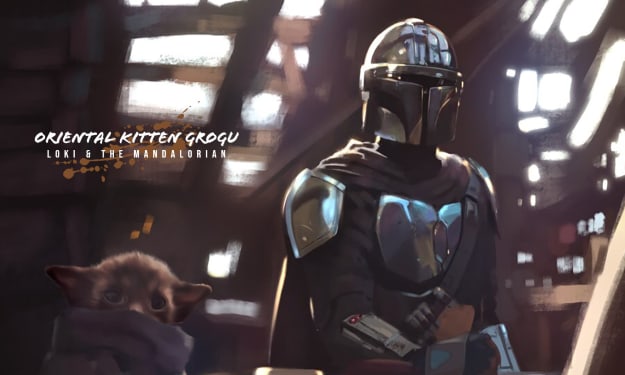Why Aren’t You Laughing?
Batman, The Killing Joke Revisited

Author's note: This was first published way back in 2016. I recently stumbled across it while clearing out folders on an old desktop PC. I still agree with what I wrote then though it has now been a very long time since I have read the work which is the topic of the below story.
I finally watched the fairly recent animated movie version of the classic Alan Moore Batman graphic novel, the killing joke. It was mostly terrible and I have no intention of dissecting its’ many flaws here. Watching the movie did however cause me to revisit the original text and reflect more deeply on it. It is hard to believe that almost 26 years have passed since The Killing Joke first appeared. I can still recall how excited I was when I was first able to obtain a copy. At that time I was enthralled by Frank Miller’s Dark Knight Returns and any story that expanded on that mythos was viewed as required reading. Most especially I was totally infatuated with the joker. Here was a character totally bereft of even the most basic code of morality. A total an complete psychopath and sociopath, the dictionary description of insane.
In The Killing Joke we see the joker at his most deranged, his most unhinged. He shoots and paralyzes Barbara Gordon (Batgirl) for basically no reason. The text then implies though does not show that he rapes her. He kidnaps commissioner Gordon and proceeds to torture him in probably the most sick and twisted ways ever put on paper in comic book or graphic novel.
Women in refrigerators and the feminist critique
Predictably and justifiably feminists have been totally mortified by this story. Here is the archetypal depiction of the “women in refrigerators” plot device used so often to drive stories about the rage and revenge impulse that motivates the male hero to ultimate salvation and success. The disfigurement, suffering, and plight of the female victim serves only as a plot point, a device to justify the actions of the male hero figure as he seeks to set things right by defeating the evil villain. The female victims suffering is awful yes but she will feel better once her “man” has settled the score.
It seems that even Alan Moore himself was sensitive to this criticism. He sought to distance himself from the work and spoke critically of it on several occasions. Beyond the feminist critique Moore questioned the inherent artistic value of the work. Reportedly he said
“it isn’t about anything you are ever going to encounter in real life…so there is no important human information being imparted” He even called it “clumsy, misjudged, and of no real human importance.”
It pains me greatly to contradict a man I hold in such high esteem but on this point I simply could not disagree more strongly. The story has always resonated with me. I am in complete agreement with the feminist critique on the truly horrific treatment of Batgirl. It is without a doubt one of the most stereotypical misuses and abuses of a female character in the history of comics. However if you can get past that, and I realizes many cannot, I would argue there is great artistic merit and value to be found in it.
As a depiction of the pure psychopath I have never encountered a more insightful work. It is simply not possible to understand what motivates the joker because the concept of motivation is not something he understands or even cares about. Yes The Killing Joke presents a “backstory” of the joker showing what turned him in to the monster he is today. However that story may or may not be the real one. It gives only a tipping point, a shadow description, of who he has become. The joker himself says of his own immutable past
“sometimes I remember it one way, sometimes another, if I am going to have a history I prefer it to be multiple choice.”
Near the end of the story Batman subdues the Joker and tells him that Gordon survived his torments. He suggests that the Joker is alone in his madness. He attempts to reach out to him and offers to help him recover in order to end to their everlasting war. The Joker declines, saying it is too late. He then says that the situation reminds him of a joke about two inmates in a lunatic asylum who try to escape. One inmate jumps across a narrow gap between the asylum and the adjoining building, but the other is afraid he’ll fall. The first inmate offers to shine his flashlight across the gap so the other can walk across it, but the second inmate replies, “What do you think I am, crazy? You’d just turn it off when I’m halfway across!” Batman chuckles at the punch line, and the two laugh as the police arrive.
The joker is revealed in this exchange as the true lunatic he actually is, and it seems Batman is as well. After all he laughs as uproariously as the joker at the joke. The ending of The Killing Joke has stayed with me since the day I first read it. No other work of art has ever penetrated my mind so deeply, caused me to question the supposed unquestionability of the sanity and rightness of the figures we revere as always right. Even with all its flaws The Killing Joke will always be a turning point in my own intellectual evolution. For that alone I view it as sacrosanct.
About the Creator
Everyday Junglist
Practicing mage of the natural sciences (Ph.D. micro/mol bio), Thought middle manager, Everyday Junglist, Boulderer, Cat lover, No tie shoelace user, Humorist, Argan oil aficionado. Occasional LinkedIn & Facebook user






Comments
There are no comments for this story
Be the first to respond and start the conversation.